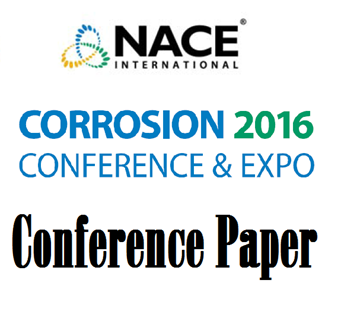Search
Products tagged with 'coating'
View as
Sort by
Display
per page
Effect of Heat Treatment Temperature on the Corrosion Protection Performance of Thermal Sprayed Aluminum Coating
Product Number:
41214-844-SG
Publication Date:
2014
$20.00
Effect Of Steel Surface Profile Peak Density On Rust Creepage
Product Number:
51322-17584-SG
Publication Date:
2022
$20.00
Effects of Blasting Methods on the Performance of Organic Coatings
Product Number:
41206-267-SG
Publication Date:
2006
$20.00
Effects of Chloride Contamination on Coatings Performance
Product Number:
41212-686-SG
Publication Date:
2012
$20.00
Electrochemical Noise Measurements for Assessing Level of Corrosion Protection Being Afforded by a Coating to External Metal Structures Using a Hand-Held Portable Device
Product Number:
51318-10860-SG
Publication Date:
2018
$20.00
Electrode Tool Logging Approaches for Casing Inner Coating Monitoring
Product Number:
51320-14795-SG
Publication Date:
2020
$20.00
Evaluation of a Hydrophobic Coating Material for Downhole Application, Lab vs. Field Evaluation
Product Number:
51324-20756-SG
Publication Date:
2024
$40.00
Evaluation of Various IMM/IC Coating Systems in Terms of Corrosion Protection
Product Number:
51324-20414-SG
Publication Date:
2024
$40.00
Extreme high-speed laser application of coating to prevent hydrogen embrittlement in metals
Product Number:
51323-19546-SG
Publication Date:
2023
$20.00
Fusion Bonded Epoxy Coatings (FBE) and Disbondment
Product Number:
51316-7246-SG
ISBN:
7246 2016 CP
Publication Date:
2016
$20.00
High Performance Liquid Epoxy Polymer Concrete: 30 Year Benchmark Solution - Aro Coating Selection Criteria
Product Number:
51324-20613-SG
Publication Date:
2024
$40.00












